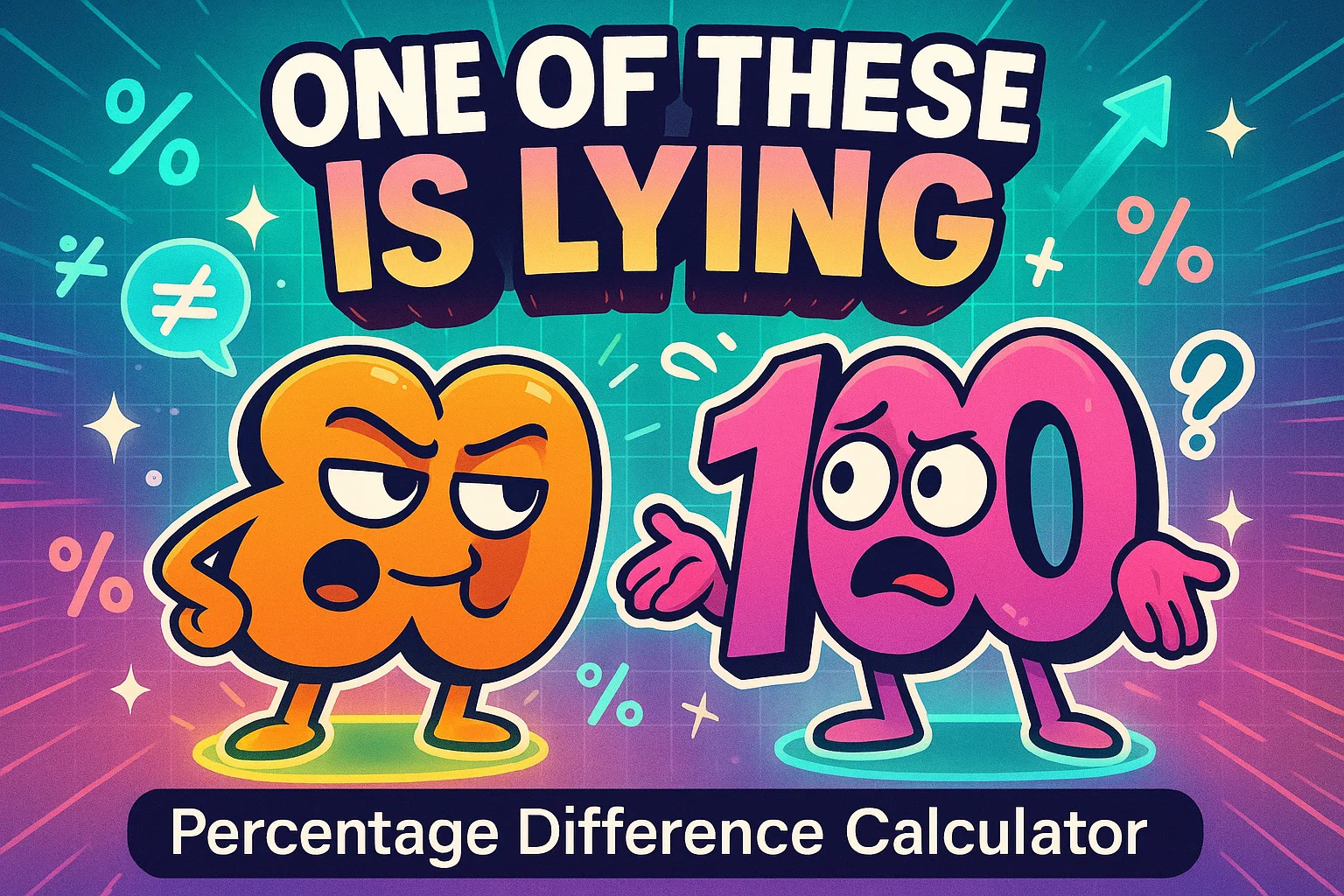Comparing two numbers doesn’t mean much until you know how far apart they really are — and that’s where percentage difference comes in. It’s a simple yet powerful way to express how much two values vary in relative terms. Whether you're in a lab, on Wall Street, or analyzing historical trends, percentage difference reveals the story the raw numbers can’t tell.
What Does Percentage Difference Really Show?
Percentage difference tells you how far apart two values are — not just in absolute terms, but in proportion to their size. It’s often used when there’s no clear starting point, like comparing test scores, salaries, or scientific results.
Unlike percentage change, which measures increase or decrease from a base value, percentage difference treats both numbers equally. That’s why it’s common in science, finance, and education, where a neutral comparison matters1,2
💡 Fun Fact: Ancient Roman tax records show early use of percentage logic — merchants were charged 1⁄100 sales tax, called centesima rerum venalium3.
When numbers seem close or far, percentage difference helps you see how much they truly vary — in context.
Formula of Percentage Change
The formula for percentage difference isn’t complex, but it’s quietly behind a lot of everyday comparisons:
(|A − B| ÷ ((A + B) ÷ 2)) × 100%
It finds the absolute difference between two values, divides it by their average, and expresses the result as a percentage.
The absolute value ensures the result is always positive — perfect for situations where direction doesn’t matter, only the size of the gap. This is why it’s widely used in scientific analysis, lab comparisons, and performance reviews⁴.
Because it uses the mean of the two numbers, it’s symmetrical: switching A and B doesn’t change the outcome. That’s essential when comparing things like product ratings, lab results, or two job offers.
Still, it's not ideal in every case. If one number is much larger than the other — like comparing 5 to 500 — the percentage difference can seem misleadingly high. In those cases, percentage change might give better insight⁵.
The Mars Climate Orbiter Miscalculation
In 1999, NASA lost a $125 million spacecraft — the Mars Climate Orbiter — because of something as simple (and devastating) as a unit mismatch. One engineering team used imperial units (pound-seconds) for force calculations, while another expected metric (newton-seconds). The discrepancy went unnoticed until the orbiter entered Mars’ atmosphere at the wrong altitude and disintegrated.
Though the root of the problem wasn’t about percentage difference itself, NASA engineers used percentage difference calculations heavily in the aftermath. They compared expected versus actual data throughout the mission, looking at how far off key figures were from one another — in fuel consumption, trajectory corrections, and force calculations⁶.
What they found was staggering: some values were off by as much as 78%, a gap too large for any course correction. That kind of post-mortem analysis, using percentage difference to express deviation in relative terms, was crucial to understanding just how bad the data divergence had become.
A few numbers might have seemed “close enough” — until you saw how far apart they really were in percentage terms.

- U.S. Internal Revenue Service, Historical Tax Concepts
-
NIST. Guide to the Expression of Uncertainty in Measurement
-
EPA. Annual Greenhouse Gas Inventory
-
National Institute of Standards and Technology. Guide to the Expression of Uncertainty in Measurement (GUM)
-
Stanford University Statistics Dept. Experimental Design & Statistical Analysis.
-
NASA. Mars Climate Orbiter Mishap Investigation Board Report.

